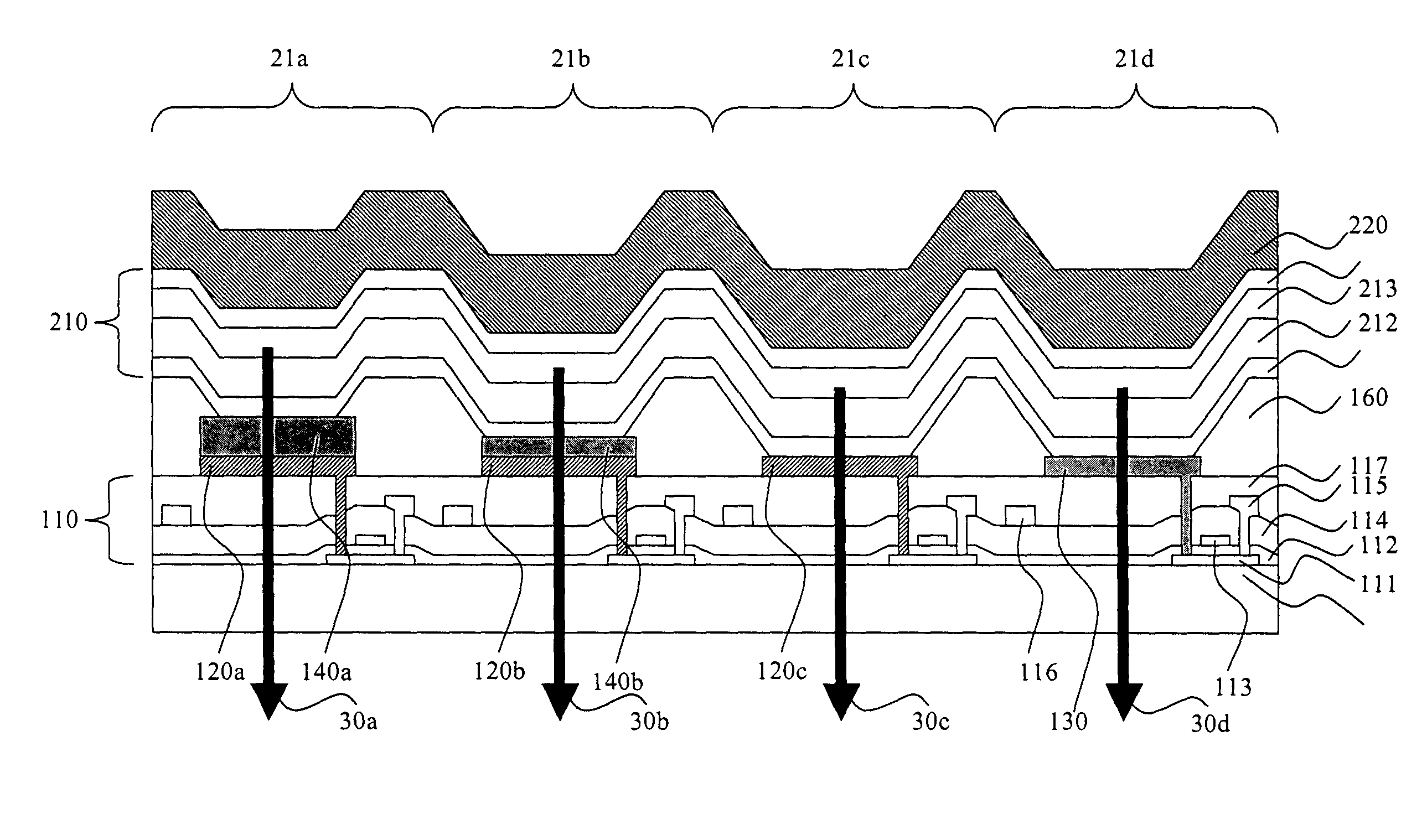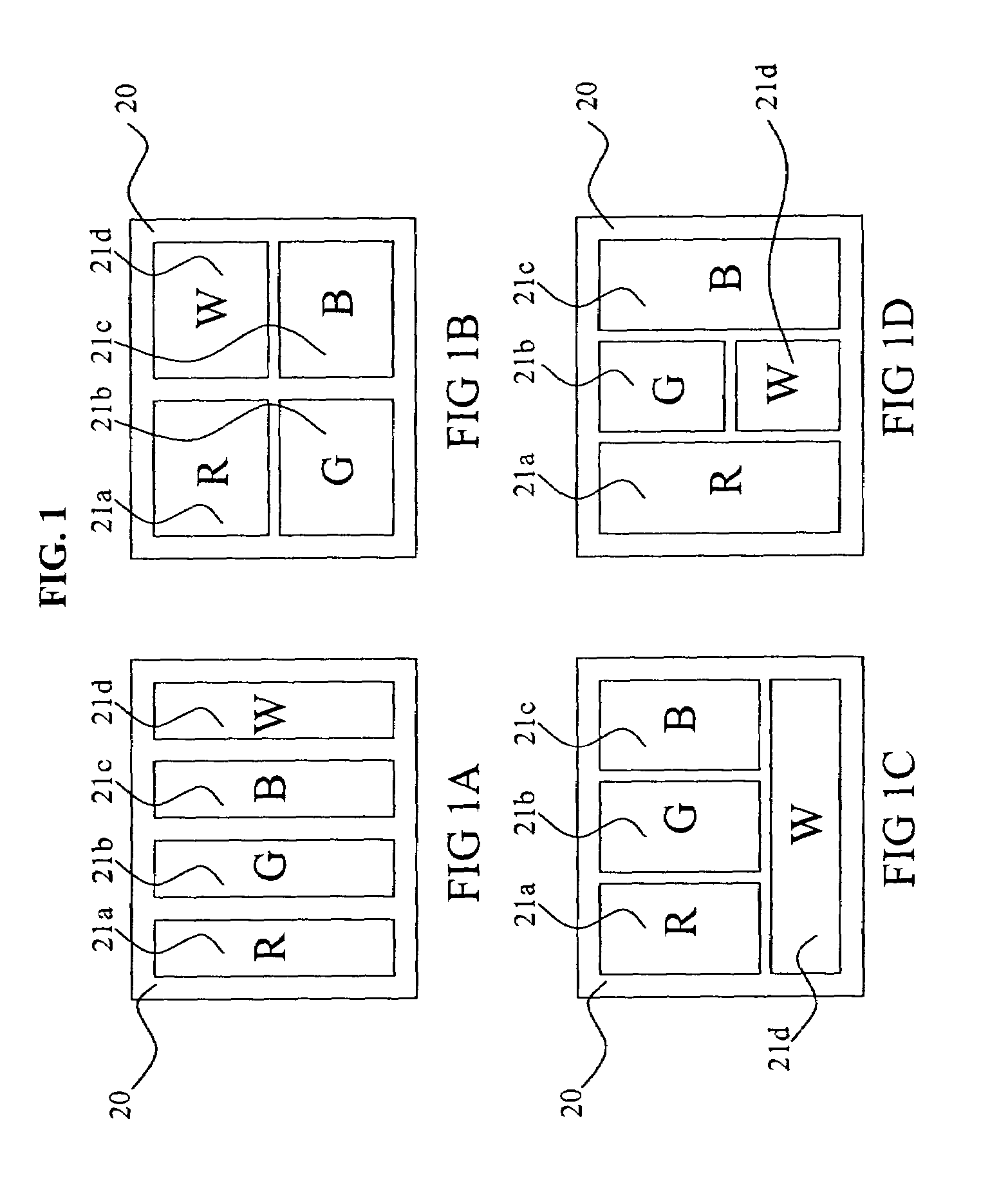OLED device having microcavity gamut subpixels and a within gamut subpixel
a technology of organic electroluminescent and microcavity, which is applied in the direction of incadescent envelope/vessel, discharge tube luminescnet screen, discharge tube/lamp details, etc., can solve the problem of no power saving for displaying any portion of the digital image, red, green and blue subpixel efficiency does not improve in this design, and achieves the effect of improving efficiency and life and reducing cos
- Summary
- Abstract
- Description
- Claims
- Application Information
AI Technical Summary
Benefits of technology
Problems solved by technology
Method used
Image
Examples
Embodiment Construction
[0015]RGBW displays are one example of a type of display that utilizes within-gamut emission to improve power consumption. Such display devices are capable of displaying color images through the use of pixels having at least four different color subpixels. At least three of the subpixels are gamut subpixels that emit different colors, which define the color gamut of the display. For example, gamut subpixels might emit light that is either Red, Green, or Blue in color. By illuminating two or more of the gamut subpixels to varying intensities, other colors can be generated. These new colors are within-gamut colors. Such a display device also has at least one additional subpixel that is a within-gamut subpixel, which emits a within-gamut color light such as white. The term white is used in the present invention to indicate any light emission which is perceived as approximately white to a viewer. These within-gamut subpixels generally are more efficient than the gamut subpixels. FIG. 1 ...
PUM
 Login to View More
Login to View More Abstract
Description
Claims
Application Information
 Login to View More
Login to View More - R&D
- Intellectual Property
- Life Sciences
- Materials
- Tech Scout
- Unparalleled Data Quality
- Higher Quality Content
- 60% Fewer Hallucinations
Browse by: Latest US Patents, China's latest patents, Technical Efficacy Thesaurus, Application Domain, Technology Topic, Popular Technical Reports.
© 2025 PatSnap. All rights reserved.Legal|Privacy policy|Modern Slavery Act Transparency Statement|Sitemap|About US| Contact US: help@patsnap.com



